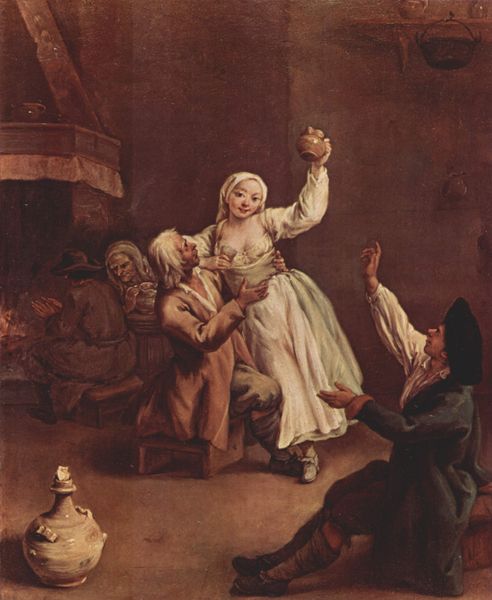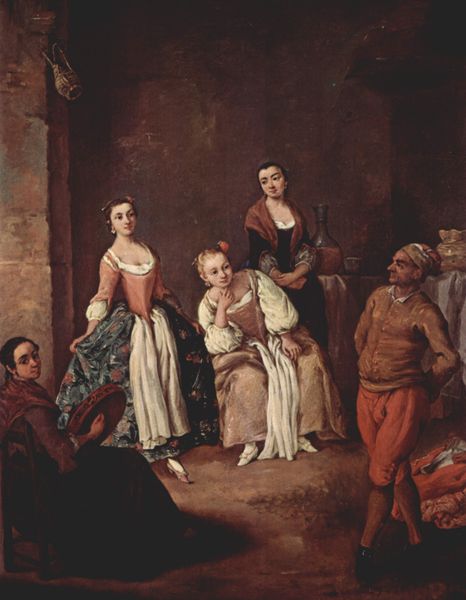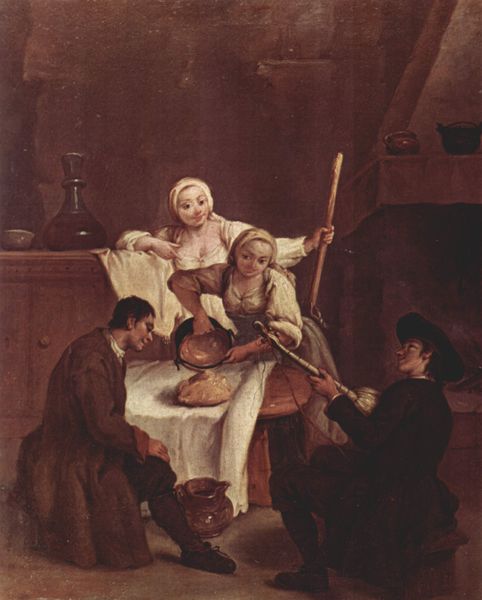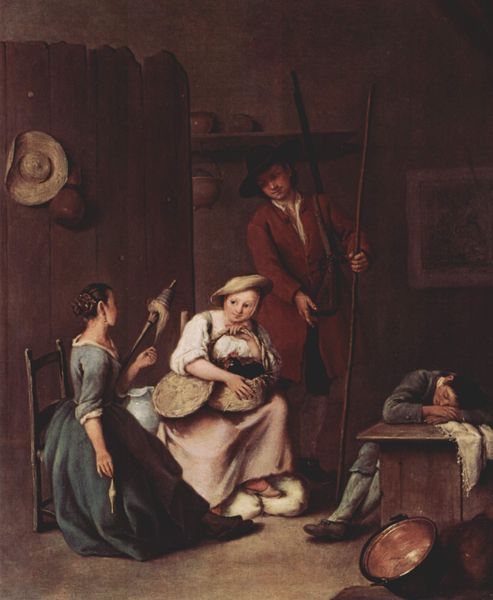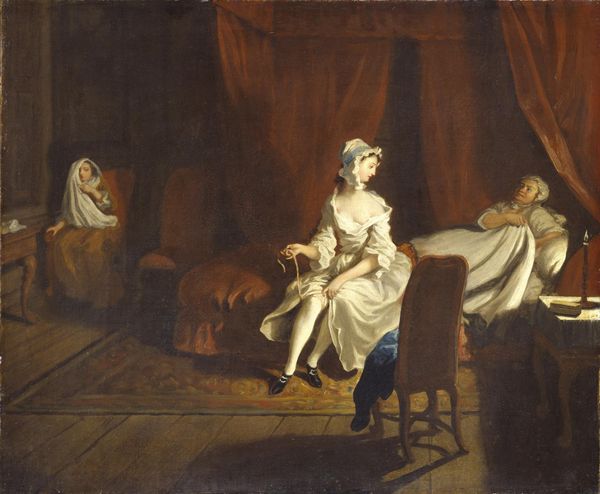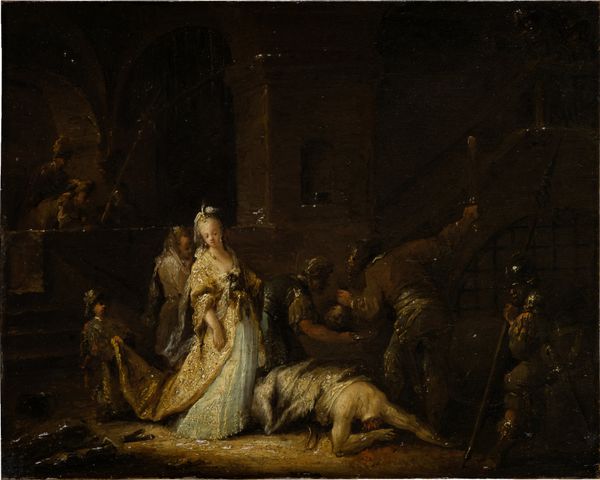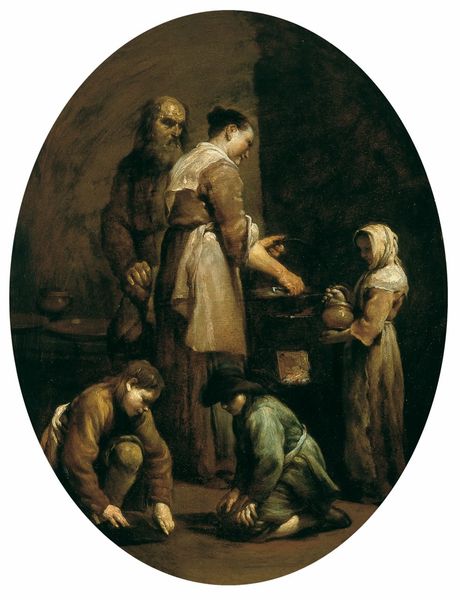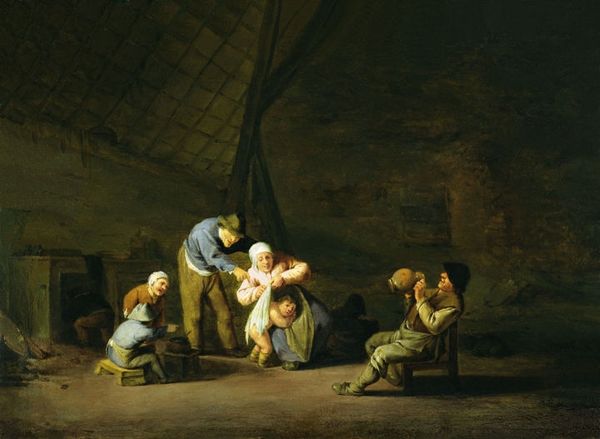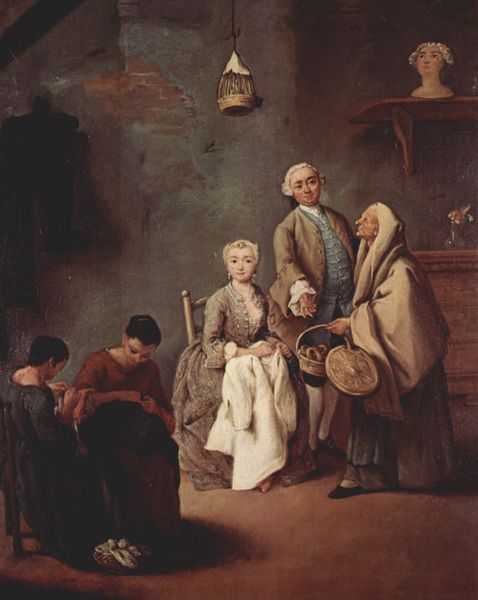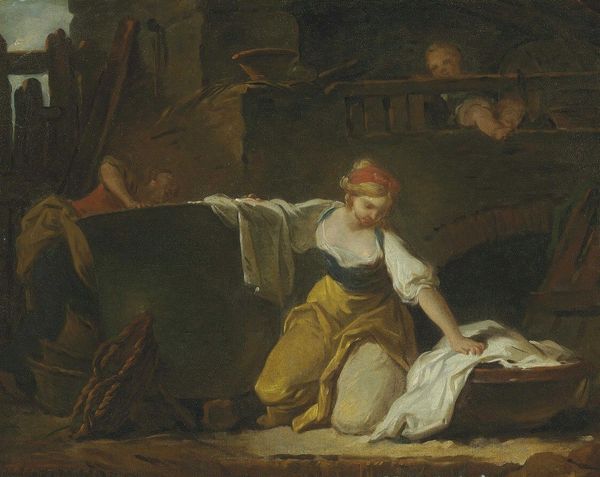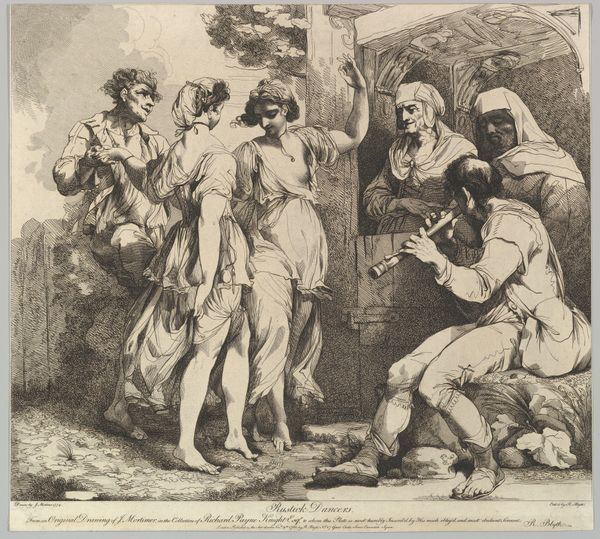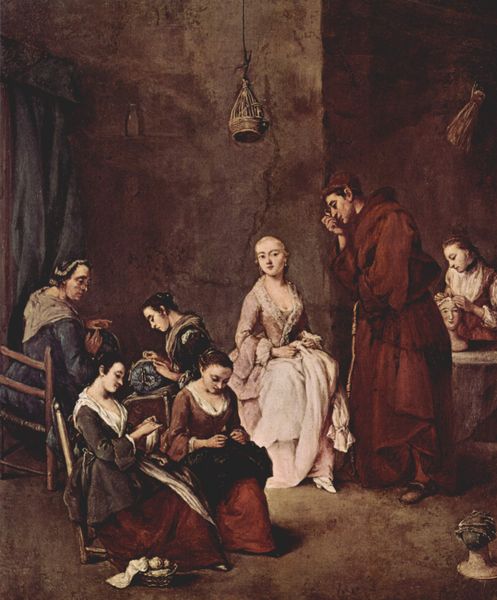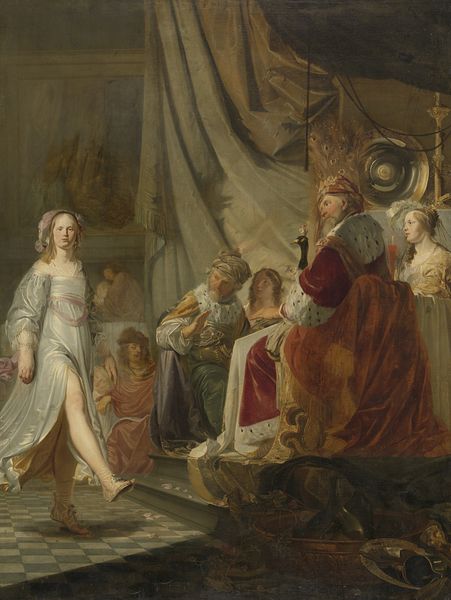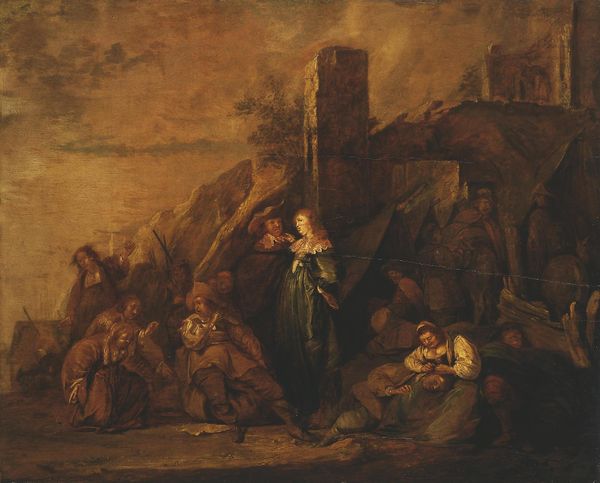
painting, oil-paint
#
portrait
#
medieval
#
painting
#
oil-paint
#
genre-painting
#
realism
Copyright: Public domain
Editor: So, this is *The Washerwomen*, an oil painting by Pietro Longhi, currently residing at the Ca' Rezzonico in Venice. It feels...grounded, I guess, almost like a snapshot of everyday life. What can you tell me about the symbols at play here? Curator: Look closely at the woman spinning thread. The spindle itself is an ancient symbol of fate, predating even the written word. Do you see how the artist positions her on the right, almost as if she's the gatekeeper of the women's destiny through her repetitive motion? Editor: I hadn't thought about that. And the laundry itself, what does that represent, beyond just...laundry? Curator: Water, purification, cyclical renewal…washing isn't merely utilitarian; it's a symbolic cleansing, shedding the old to embrace the new. Consider the communal aspect. This shared labor enforces social bonds, echoing the rhythms of generations. Notice how the young boy is present too, observing the ways of labor that were very common in past eras. What story do you think he's been told? Editor: It's easy to miss those kinds of details! I’m struck by the realism alongside the depth of all of those visual connections you mention. I suppose even the simplest image can hold so much cultural history. Curator: Absolutely. These women, in their humble task, are embodiments of resilience and continuity. Each character is rendered not as individuals but part of a greater interwoven tableau, which is meant to echo into perpetuity. Editor: It definitely feels like seeing beyond just surface level, seeing the connections between the painting, the time it represents and how the simple objects relate to deep concepts of cleansing, destiny and history.
Comments
No comments
Be the first to comment and join the conversation on the ultimate creative platform.
